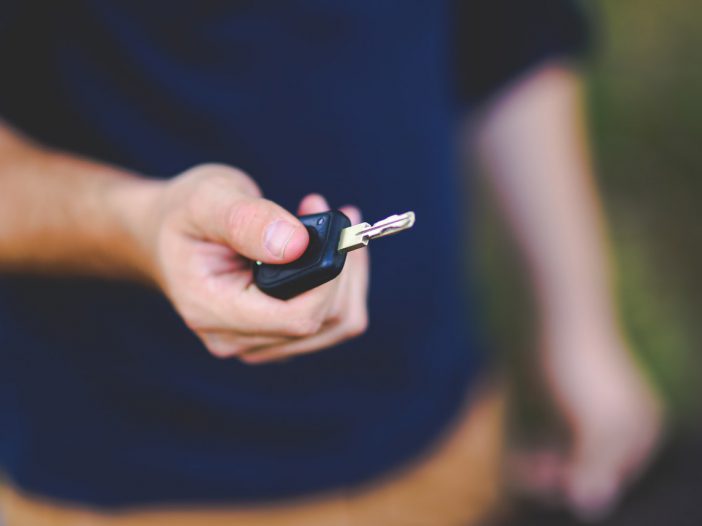
How To Pass A Breathalyzer Test
As early as 1874, research considered the possibility of detecting a person’s alcohol content via their breath. In 1931, Dr. Rolla Neil Harger from the Indiana University School of Medicine developed the drunkometer, the first practical roadside breath-test device. The drunkometer could detect the presence of alcohol in a person’s breath but could not actually show their blood alcohol content. In 1953, Robert F. Borkenstein worked with Dr. Harger to develop a smaller, easier to use device known as the breathalyzer. Upgrades to the device used infrared radiation and eventually fuel cells and microchips, but the name still stuck.
Today the breathalyzer is one of the most invaluable tools for identifying drunk driving and providing an objective, accurate measure of a person’s blood alcohol content. Many drivers are under the assumption that you can manipulate breathalyzers in cars or an authorities breathalyzer test through various means. Let’s take a closer look at how breathalyzers work and how you can pass a breathalyzer test.
How Do Breathalyzers Work?
So, how do breathalyzers work? Dr. Harger’s original design for the drunkometer used a balloon, which collected a person’s breath sample. This was then pumped through a potassium permanganate solution, which changed color in the presence of any alcohol. The more extreme the color change, the more alcohol in the breath sample. It was an effective system for determining if a person had alcohol in their bloodstream, but it did not do so well at actually measuring a person’s level of intoxication nor could it measure their blood alcohol content.
We have come a long way since balloons filled with human breath. Today, breathalyzers use complex fuel cells. These fuel cells use two platinum electrodes surrounding an acidified electrolyte material. When you breathe into the breathalyzer, any alcohol in your breath is oxidized by one of the platinum electrodes, producing protons, electrons, and acetic acid.
Electrons are sent to an electric current meter and the other platinum electrode. The protons move into the lower chamber of the device, combining with electrons and oxygen to create water. Essentially, more oxidized alcohol creates a larger electrical current. A microprocessor in the breathalyzer can measure the current and calculate the blood alcohol content level from it.
Blood Alcohol Concentration and Your Breath
Before breathalyzers, the main means of measuring your blood alcohol content or concentration involved either your blood or your urine. Although both were fairly accurate, neither is particularly reasonable for officers on the side of the road.
When you imbibe, the alcohol gets absorbed into your bloodstream via your mouth, throat, intestines, and stomach. Alcohol doesn’t change much chemically when it enters your bloodstream. It is also relatively volatile, meaning it evaporates easily given your internal body temperature. As it flows over around your lungs, the alcohol evaporates into your lungs and gets stored within small sacs known as alveoli. When you exhale, the alcohol-rich air in these sacs is detectable given the right equipment.
The alcohol in your alveoli is also directly related to a BAC ratio of about 2,100 to 1. This means that about 2,100 milliliters of alveolar air will have around the same amount of alcohol as 1 milliliter of your blood.
Breathalyzer Myths
Since the dawn of breathalyzers, people have come up with a wide range of tricks and strategies to “fool” breathalyzers. Here are some of the most popular. Spoiler: none of them actually work.
Holding Your Breath
Don’t hold your breath for this trick. Keeping your breath held in actually gives alcohol more time to diffuse within your lungs. This will actually increase your BAC readings up to 15 percent when you do breathe out.
Burping
Burps come from your stomach, and gas from your stomach should contain a lower concentration of alcohol than your lungs, right? That might seem fine in theory, but your burps still contain some air from your lungs. Burping will likely show the exact same or higher BAC readings.
Gum or Mints
Chewing gum or sucking on a mint will cover up your breath, but it won’t do much to hide your BAC.
Pennies
People still believe that sucking on pennies will somehow throw off breathalyzer readings. The reasoning behind this ranges. Some people believe that the copper in pennies has a chemical reaction with the alcohol in your breath to eliminate the alcohol that comes out of your mouth. Some people believe that the copper actually coats your mouth to mask actual blood alcohol levels. Some people think that the pennies will give a lower reading, while others think the pennies will just confuse the breathalyzer.
In reality, there’s little evidence to suggest that copper has any sort of reaction with alcohol. Even if it did, the modern penny contains more zinc than copper. A mouthful of pennies isn’t exactly hard for an officer to notice either. More than anything, you’re just introducing a choking hazard into your life.
Field Sobriety Tests
The main reason that none of the above will work is that they assume that the breathalyzer is the only and primary means that an officer determines your state of drunkenness. Although breathalyzers are effective in detecting BAC, they are by no means the only way that officers measure your level of intoxication. This is where field sobriety tests come into play.
Field sobriety tests can vary from officer to officer, but the National Highway Traffic Safety Administration has developed three main tests that are considered standard and usable as evidence in court.
Horizontal Gaze Nystagmus
Nystagmus refers to an involuntary shaking in your eyes that is most prominent at the very edges of your vision. When you’ve been drinking, nystagmus appears at less severe angles. In order to test this, the officer will tell you to follow an object with your eyes. This could be a pen, flashlight, or finger. The main thing they’re watching for is eye shaking characteristic of nystagmus. If you’re not drunk, you should be able to follow the object with your eyes smoothly.
Nystagmus occurring at 45 degrees off center is a big red flag, an immediate indicator that you likely have a BAC of 0.08 percent or higher. However, there are other reasons that a person could have nystagmus, including certain medications, which is where the other sobriety tests come in.
The Walk-and-Turn
In this test, the officer will most likely ask you to walk in a straight line, heel to toe, for nine steps while counting out loud and keeping your eyes down. After the ninth step, pivot on one foot and walk nine steps, heel to toe, to end up back where you started.
While this does test your coordination, the walk-and-turn test is more about testing divided attention. Alcohol has a severe effect on your striatum, the part of the brain responsible for helping you multitask. The effects are especially significant when you have to perform both physical and mental tasks at the same time. Alcohol also affects your hippocampus, the part of the brain responsible for creating and storing memories, like new instructions, for instance. You can’t follow instructions if you can’t even remember them. The main things the officer is looking for include:
- Keeping your balance while taking instructions
- Stopping to regain your balance in the middle of walking
- Beginning before they have even finished giving instructions
- Failing to touch heel to toe
- Stepping off your straight line
- Using your arms to balance
- Not turning properly
- Not taking the right amount of steps
The One-Leg-Stand
During the one-leg-stand, the officer will ask you to stand on one foot and count out loud for 30 seconds until instructed to lower your other foot and return to normal. Similar to the walk-and-turn test, the one-leg-stand evaluates your divided attention, ability to remember instructions, and your general balance. The main things the officer is looking for include:
- Swaying
- Using your arms to balance
- Hopping on your foot to balance
- Putting your foot down
These three tests combined are 91 percent accurate according to the NHTSA. However, even beyond field sobriety tests, many officers have enough training and experience to determine if you are drunk or sober just by talking to you. Slurred speech, an inability to focus, and the smell of alcohol are easy to detect.
How to Actually Pass a Breathalyzer Test
The secret to actually beating a breathalyzer: don’t drink and drive. There really are no tricks or strategies. Breathalyzers are advanced tools that are frequently calibrated and checked for accuracy and proper function.
You are within your right to refuse a breathalyzer test, though that can come with its own can of worms. Almost every state has penalties for test refusals. These test refusal penalties are always more severe than the penalties for simply failing the test. There isn’t much to be gained by refusing a test as officers can easily use other evidence, like the field sobriety tests, in court. Some courts may actually see your test refusal as evidence they can use against you.
Take all that time you spend thinking of complex strategies for fooling the breathalyzer and invest it into planning ahead. Find a designated driver, keep a cab or rideshare service in your phone, or make use of public transit. Consider spacing out your drinks or just not drinking at all. Just please stop putting pennies in your mouth.
Sources:
- https://en.wikipedia.org/wiki/Breathalyzer
- https://www.nytimes.com/1983/08/10/obituaries/rolla-n-harger-dies-invented-drunkometer.html
- https://www.nytimes.com/2002/08/17/us/robert-f-borkenstein-89-inventor-of-the-breathalyzer.html
- https://electronics.howstuffworks.com/gadgets/automotive/breathalyzer2.htm
- https://www.thoughtco.com/beat-a-breathalyzer-3975944
- https://www.thoughtco.com/sucking-on-penny-4076914
- https://auto.howstuffworks.com/car-driving-safety/safety-regulatory-devices/can-a-penny-help-pass-breathalyzer.htm
- https://gizmodo.com/5902852/the-secrets-of-field-sobriety-tests


